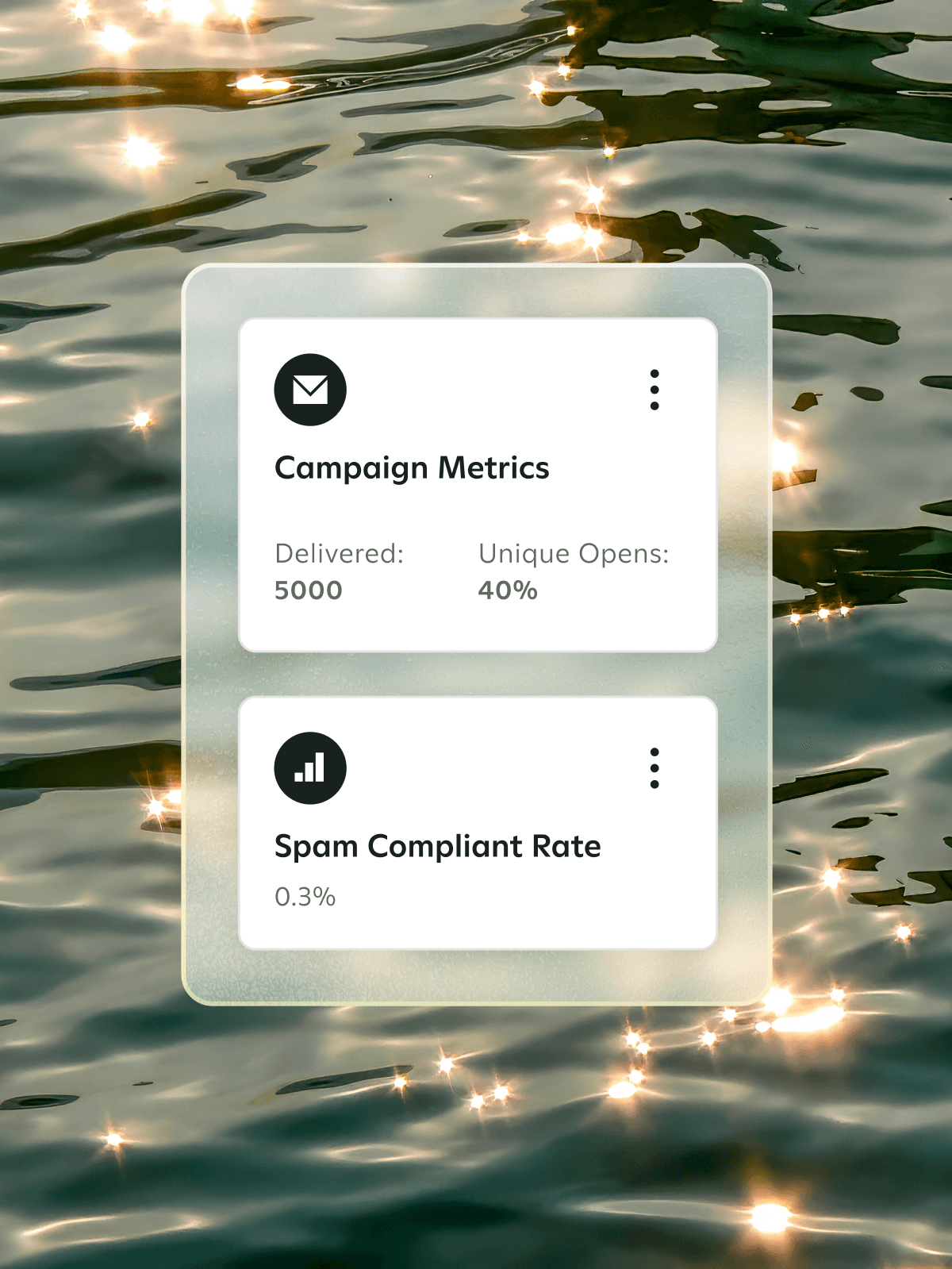BFCM Success Starts with Enlightenment: 4 Questions to Ask Now
Find balance in your BFCM budget by asking these questions early, so you can invest in your best-performing channels.

BFCM Success Starts with Enlightenment: 4 Questions to Ask Now
Find balance in your BFCM budget by asking these questions early, so you can invest in your best-performing channels.

When it comes to driving real, sustainable results in an uncertain macroeconomic environment, clarity is key. Marketers need to have crystal-clear alignment on their goals, messaging, and execution tactics to build an informed investment strategy that powers success. As BFCM approaches—where every dollar counts—all marketing decisions need to ladder back to this cohesive understanding of what matters most to your brand. Missteps can be costly, muddying the waters and losing consumers to more compelling brands. By asking the right questions now, you'll get the answers you need to allocate spend, make agile decisions, and maximize performance ahead of—and throughout—BFCM.
Don’t wait until Q4 to start setting goals for your BFCM strategy. Take the time now to align on your targets—the more specific, the better. You know that your brand’s goal is ultimately to make money, but how will you measure that? It’s critical to have a clear definition of success and what you’re trying to achieve so that every campaign you run is working toward that goal.
It could be a revenue number, an ROI percentage, or focused on engagement and measuring it by CVR and opt-outs. When a goal is vague, it’s harder to determine which levers to pull or how to iterate on your campaigns to reach that goal.
The key here is to define your goals by the specific outcomes your brand wants to achieve, not the inputs you'll use to reach those outcomes.
For example, it's common to hear that one of a brand's goals is to spend below their budget. This is perfectly reasonable, especially for brands who are focused on ROI, but it's also limiting. Anchoring in the ROI number itself will unlock more opportunities, allowing you to be agile if greater spend would drive substantially better results.

Grounding in that number, rather than your budget, ensures you're always driving towards a clear outcome instead of trudging towards uncertainty. Your budget should be a tool to achieve your goal, not the actual goal itself.
Good goals for BFCM revolve around specific revenue numbers, specific ROI numbers, or specific engagement metrics.
By having a clear vision of what you want to achieve during Cyber Week, you’ll be able to start identifying what strategies and channels will get you there—and what work you need to do before BFCM to get the most out of your campaigns.
This question can help identify which channels will play the biggest role in your BFCM strategy, but it can also inform your long-term marketing strategy.
Some brands focus their efforts on channels that drive the most raw revenue overall. While this strategy makes sense at first glance, brands who only take this approach are leaving money on the table.
Often, raw revenue numbers simply correlate with the volume of consumers who are active on that channel at any given time. But would those consumers be more valuable to the brand if you could encourage them to activate on another channel instead? Looking at metrics like cost per click, cost per conversion, customer lifetime value, ROI, and so on can give you a more comprehensive picture of where your efforts will produce the biggest returns—and which channels are actually the healthiest.
We’ve had conversations with brands who wanted to put more of their marketing budget into social media channels because they were seeing big revenue numbers there. But the data showed social channels were expensive—a high cost per click meant brands needed much bigger budgets to hit their targets. Their owned channels were a fraction of the price.
There’s no shortage of marketing channels to analyze. Typically, we’ve found that a brand’s owned channels are much more predictable and more consistent in terms of actual performance.
In the long run, investing into owned channels pays off by building an engaged customer base that's more likely to convert at a lower cost. Focusing on the long-term value of marketing channels ensures a more stable and profitable future.
You’ve identified your goals, the channels you’ll use to reach your goals, and now it’s time to understand your messaging strategy. Our recent customer survey found that 86% of marketers are making changes to highlight brand value in their messaging this year.
Value-based messaging is really the name of the game in 2025. There's so much content available on your subscribers’ phones, so your messaging needs to be specific, targeted, and meaningful.
Any brand can offer a discount, but what can your brand offer your customers that no one else can?
Is your brand focused on quality and durability, sustainability, or exclusivity? Does shopping with you make your customers cool and trendy? Infuse that into your messaging, and your email and SMS sends will perform much better.
The issue, of course, is that each customer will value your brand for unique reasons. In an ideal world, every customer receives unique messaging that’s targeted to their specific values and preferences. An easy way to start powering those 1:1 messages (and drive more revenue) is to use AI.
AI Pro helps you better recognize your subscribers when they’re on-site, automatically adjusts your audiences and segmentation strategy to reach high-intent subscribers (which can also help you reduce spend by only sending to subscribers who are likely to convert), delivers messages at exactly the right time on a subscriber-level, and crafts on-brand content trained on your top-performing messages.
Last BFCM, brands using AI Pro and AI Journeys saw 2x higher revenue growth than brands that didn’t use AI.
AI is expected to have an even bigger impact on BFCM sends this year, but it’s not the only thing marketers are keeping an eye on. Another consideration is the current economic climate. 64% of the marketers we surveyed are anticipating inventory shortages this BFCM. 41% of those marketers are planning to build future demand through pre-orders and sending in-stock notifications, which is a powerful move for two reasons. One, it drives immediate revenue now and ensures you have enough stock to fulfill orders. Two, it helps you ramp up your messaging frequency, which can have a big impact on your BFCM performance.
Elevate your values and messaging frequency for maximum impact
Subscribers who joined marketing lists over the summer accounted for 31% of brands’ Cyber Week revenue. These are high-value subscribers who are ready to build a relationship with your brand. Nurture these relationships over the summer so they’ll be primed to receive more content from your brand during BFCM. They’ll already be used to getting your messages—and ready to take action.
For a customer, BFCM marketing can feel like winning the lottery, and not necessarily in a good way. When someone wins the lottery, suddenly, they have these distant relatives and long-lost friends reaching out, asking for a share of the prize. Your brand doesn't want to be one of those friends or family members. The lottery winner is going to share with those they have an established relationship with. Don’t pop up once a year asking for your subscribers’ shopping dollars. You’ll get that revenue by earning their loyalty and trust over time.
Use the summer to refine your messaging and slowly ramp up sending to a higher frequency. You’ll drive more revenue overall and set the right expectations with your subscribers, plus, you’ll get data that you can use to guide your end-of-year campaigns.
Speaking of collecting data, it’s a good time to discuss and plan for where you need to run A/B tests to ensure your BFCM strategies are effective.
Consider planning for A/B testing early on so you can collect valuable insights before the crucial Q4 period. By starting early, you can gather enough data to make informed decisions that'll maximize your BFCM success. Early testing not only helps you refine your strategies but also ensures you have enough time to implement the winning variations before the end-of-year rush.
There’s no shortage of elements you can A/B test in your SMS and email campaigns, but try to tie tests back to your BFCM goals and budget. There are some elements that have a higher impact on spend, like including images or emojis. But going back to our earlier point, if including those elements has proven successful and drives better ROI, it’s worth the investment.
Other A/B tests to consider ahead of BFCM:
- Discounts (dollar off vs. percentage off vs. BOGO offers)
- Emotion and tone
- The use of humor
- Time-sensitivity
- Send times
- CTAs
With A/B testing, you’ll also want to set clear goals. Why are you doing these tests and what do you hope to learn? What specific metrics are you trying to improve? It’s important that you run your tests several times to verify that the results are true.
A/B testing is invaluable in helping you better understand your subscribers and what they want from your brand. But it does take time to set up the tests, run them, analyze the results, and apply your learnings. AI can be a major assist in your testing as it can analyze the data and make real-time adjustments, effectively A/B testing every send and optimizing every message on a subscriber-level.
You may have noticed a theme in these questions—they’re all about value.
What does your business value? That’s where your BFCM goals should be oriented. What do your customers value? That’s what needs to ground your messaging and get refined through testing.
Companies that are going to succeed this year will be those that have a rock-solid understanding of their internal definitions of success and their external “why”—what they offer their customers that’s unique, useful, interesting, or important. When you and your customers both have clarity about value, that’s when you’ll win.
Continue learning how to drive success this BFCM by exploring the resources below.













